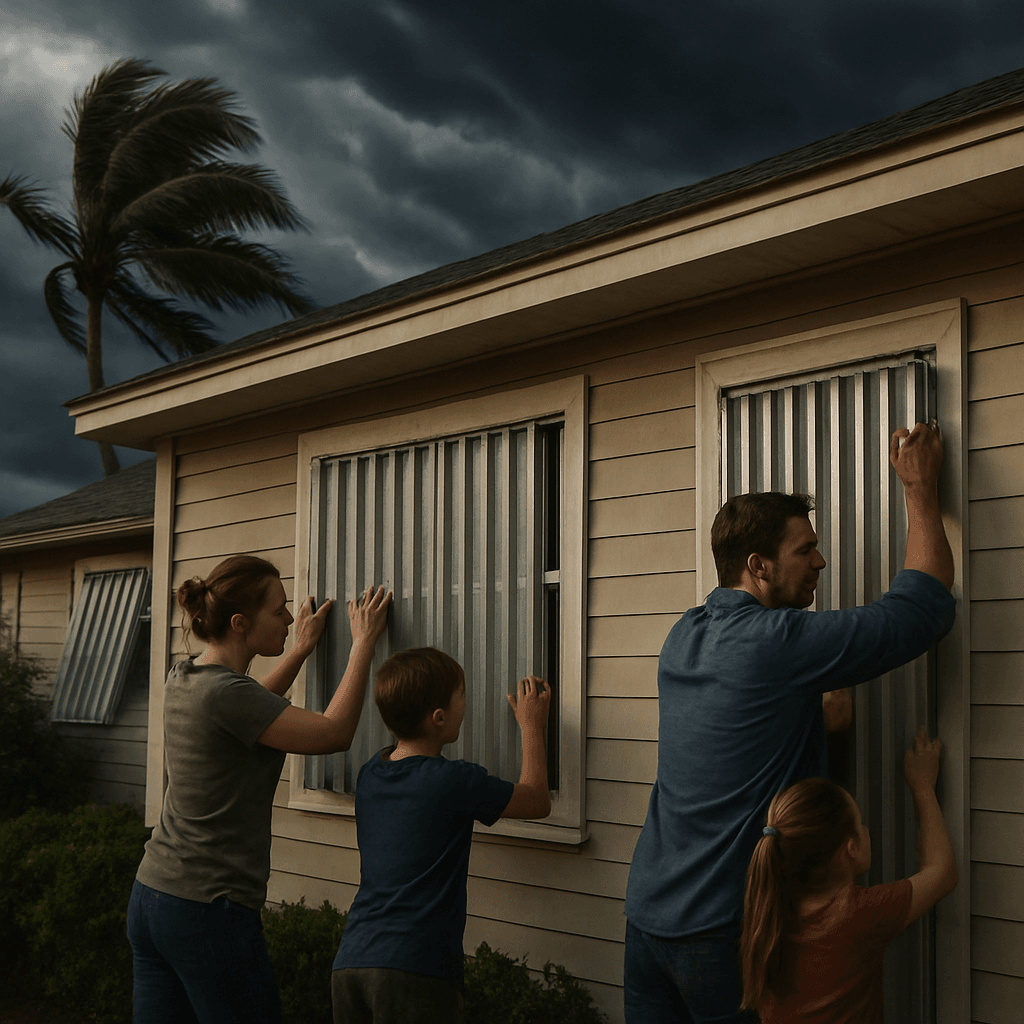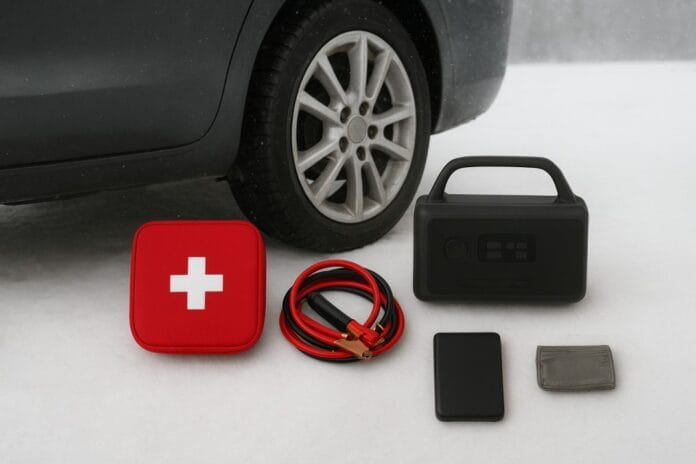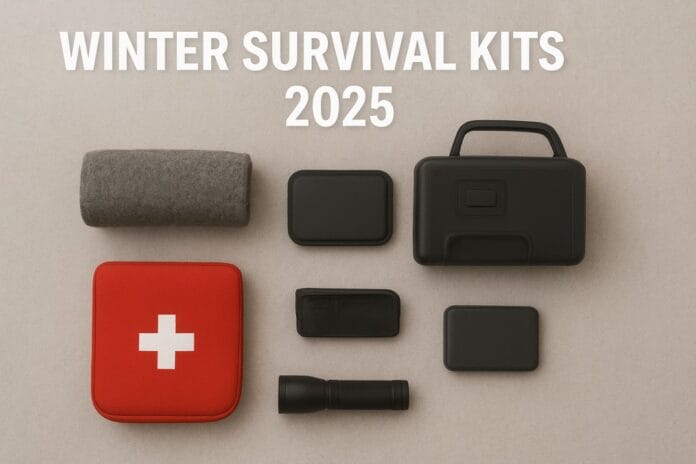Introduction: The Unprecedented Threat of Hurricane Erin (2025) and the Urgency of Hurricane Erin Survival
As Hurricane Erin (2025) carves its path along the East Coast of the United States, its sheer power and widespread impact serve as a stark reminder of nature’s formidable force. This isn’t just another storm; Hurricane Erin has demonstrated an unprecedented combination of intensity and reach, affecting hundreds of miles of coastline with life-threatening storm surges, torrential rains, and destructive winds. For residents in its path, the question isn’t if they will be affected, but how severely, and more importantly, how to ensure their Hurricane Erin Survival. This article is your definitive guide to navigating the complexities of this powerful storm, offering actionable strategies and essential insights to protect yourself, your family, and your property. From pre-impact preparations to post-storm recovery, mastering the principles of Hurricane Erin Survival is paramount. We will delve into understanding the storm’s characteristics, preparing your home, ensuring personal safety during the event, and rebuilding in its aftermath. Embrace the knowledge within these pages to transform fear into preparedness, and vulnerability into resilience, ensuring your successful Hurricane Erin Survival.

1. Understanding Hurricane Erin: A Closer Look at the Storm’s Characteristics
Effective Hurricane Erin Survival begins with a thorough understanding of the storm itself. Hurricane Erin (2025) has exhibited unique characteristics that demand specific preparedness measures. Unlike many hurricanes that make direct landfall, Erin’s immense wind field, spanning nearly 575 miles from end to end, means its effects are felt far beyond its immediate center. This broad reach, coupled with its sustained intensity, poses a significant threat even to areas not directly in the eye of the storm.
The Anatomy of Hurricane Erin’s Threat
•Wind Field: Erin’s expansive wind field generates powerful gusts that can cause widespread power outages, structural damage, and down trees over a vast area. This makes securing loose objects and reinforcing homes critical for Hurricane Erin Survival.
•Storm Surge: The most dangerous aspect of any hurricane, Erin’s storm surge has already caused significant coastal flooding, particularly in the Outer Banks of North Carolina. This wall of water, pushed ashore by the hurricane’s winds, can inundate low-lying areas, making evacuation a primary concern for Hurricane Erin Survival.
•Rainfall: While not always the primary focus, the torrential rainfall associated with Hurricane Erin can lead to inland flooding, flash floods, and saturated ground, increasing the risk of landslides and tree falls. This necessitates attention to drainage and flood mitigation in your Hurricane Erin Survival plan.
•Rip Currents: Even far from the storm’s center, Hurricane Erin generates dangerous rip currents that can persist for days after the storm has passed. These hidden dangers pose a threat to beachgoers and swimmers, highlighting the need for continued vigilance as part of Hurricane Erin Survival.
Historical Context and Current Trajectory
While the name Erin has been used for several tropical cyclones in the Atlantic, Hurricane Erin (2025) stands out due to its current trajectory and impact. Previous storms named Erin, such as Hurricane Erin (1989) and Tropical Storm Erin (2001), had different paths and intensities. The current Erin, however, has maintained its strength as a Category 2 hurricane for an extended period, brushing the US East Coast and causing significant disruption without making a direct landfall. Its movement northeastward out to sea does not diminish the need for robust Hurricane Erin Survival strategies in affected coastal and inland regions.
Understanding these specific characteristics of Hurricane Erin (2025) is the first step towards effective preparedness. It allows individuals and communities to tailor their Hurricane Erin Survival plans to the unique threats posed by this powerful and far-reaching storm.
2. Pre-Impact Hurricane Erin Survival: Preparing Your Home and Family
The most effective Hurricane Erin Survival strategies are implemented before the storm hits. Proactive preparation can significantly reduce damage, ensure safety, and expedite recovery. This phase focuses on securing your property, assembling essential supplies, and establishing clear communication plans.
Securing Your Home and Property
Protecting your physical assets is a critical component of Hurricane Erin Survival.
•Exterior Reinforcement: Secure all loose outdoor items (patio furniture, trash cans, grills). Trim dead or weak tree branches that could fall. Consider installing hurricane shutters or boarding up windows with plywood.
•Roof and Gutter Maintenance: Ensure your roof is in good repair and gutters are clear to prevent water accumulation and potential leaks. This is vital for long-term Hurricane Erin Survival of your home.
•Generator Preparedness: If you have a generator, ensure it is in good working order, has sufficient fuel, and is operated safely outdoors, away from windows and doors, to prevent carbon monoxide poisoning.
•Important Documents: Gather vital documents (insurance policies, identification, medical records, financial information) and place them in a waterproof, easily accessible container. Consider digitizing them and storing them on a cloud service.
Assembling Your Hurricane Erin Survival Kit
A well-stocked emergency kit is non-negotiable for Hurricane Erin Survival. Aim for at least 3-7 days’ worth of supplies per person.
•Water: Store at least one gallon of water per person per day for drinking and sanitation. Have purification tablets or a reliable water filter as a backup.
•Food: Non-perishable food items that require no cooking or refrigeration (canned goods, energy bars, dried fruits, nuts). Don’t forget a manual can opener.
•First Aid Kit: A comprehensive kit with bandages, antiseptic wipes, pain relievers, any prescription medications (at least a 7-day supply), and essential medical supplies for chronic conditions.
•Lighting: Flashlights with extra batteries, headlamps, and battery-powered lanterns. Avoid candles due to fire risk.
•Communication: A battery-powered or hand-crank NOAA weather radio to receive emergency broadcasts. Fully charged power banks for cell phones.
•Tools: Multi-tool, wrench (to turn off utilities), duct tape, utility knife, and a whistle to signal for help.
•Sanitation and Hygiene: Toilet paper, wet wipes, hand sanitizer, garbage bags, and feminine hygiene products.
•Cash: ATMs may not work during power outages. Have small denominations of cash on hand.
Developing a Family Communication and Evacuation Plan
Every family member must know what to do and how to communicate for effective Hurricane Erin Survival.
•Out-of-State Contact: Designate an out-of-state contact person who all family members can call to check in. It’s often easier to make long-distance calls during local emergencies.
•Meeting Points: Establish primary and secondary meeting points outside your home and outside your neighborhood in case of evacuation.
•Evacuation Routes: Know your evacuation zone and identify multiple routes to safety. Practice these routes during non-emergency times. Follow official evacuation orders immediately.
•Pet Preparedness: Include pets in your plan. Have a pet emergency kit with food, water, medications, and carriers. Identify pet-friendly shelters or alternative accommodations.
3. During the Storm: Navigating the Immediate Dangers of Hurricane Erin
Once Hurricane Erin makes its presence felt, the focus shifts from preparation to immediate safety and survival. This phase of Hurricane Erin Survival demands vigilance, adherence to safety protocols, and quick decision-making.
Staying Safe Indoors
If you are sheltering in place, follow these guidelines for Hurricane Erin Survival:
•Stay Away from Windows: Move to an interior room, bathroom, or closet on the lowest floor. If you have a basement, that is often the safest place. Keep curtains and blinds closed.
•Monitor Official Broadcasts: Use your NOAA weather radio or battery-powered radio to stay informed about storm updates, evacuation orders, and emergency instructions. Do not rely solely on television or internet, as these may be disrupted.
•Power Outages: Be prepared for extended power outages. Turn off major appliances to prevent damage from power surges when electricity is restored. Use flashlights, not candles.
•Food Safety: Keep refrigerator and freezer doors closed as much as possible to preserve food. Discard perishable food after four hours without refrigeration.
•Water Conservation: Conserve water for drinking and essential hygiene. If your tap water becomes unsafe, use your stored water or purification methods.
Navigating Floodwaters and Storm Surge
Floodwaters are extremely dangerous and a leading cause of fatalities during hurricanes. Prioritize Hurricane Erin Survival by avoiding them.
•Turn Around, Don’t Drown: Never walk or drive through floodwaters. Just six inches of moving water can knock you down, and two feet can sweep away a vehicle. The water may also conceal hazards like downed power lines or debris.
•Evacuate if Ordered: If authorities issue an evacuation order, leave immediately. Do not wait until conditions worsen.
•Higher Ground: If trapped by rising water, seek higher ground immediately. Climb to the highest point in your home or a sturdy roof if necessary, and signal for help.
Dealing with High Winds and Debris
Hurricane Erin’s powerful winds can turn everyday objects into dangerous projectiles. Protecting yourself from flying debris is crucial for Hurricane Erin Survival.
•Seek Shelter: Stay in the safest part of your home. If your home sustains damage, move to a safer section or seek shelter with neighbors if it is safe to do so.
•Avoid Damaged Structures: Do not enter damaged buildings after the initial impact, as they may collapse.
•Downed Power Lines: Assume all downed power lines are live and extremely dangerous. Stay far away and report them to authorities.
4. Post-Hurricane Erin Survival: Recovery and Rebuilding
The aftermath of Hurricane Erin can be as challenging as the storm itself. The recovery phase of Hurricane Erin Survival involves assessing damage, ensuring ongoing safety, and beginning the long process of rebuilding.
Assessing Damage and Ensuring Safety
Your immediate actions after the storm can prevent further harm and facilitate recovery.
•Safety First: Do not return home until authorities declare it safe. Once home, check for structural damage, gas leaks (smell of rotten eggs), and downed power lines. If you suspect a gas leak, leave immediately and call the gas company.
•Utility Shut-Offs: If you evacuated, or if advised by authorities, turn off your main water valve, electricity, and gas supply to prevent further damage or hazards.
•Document Damage: Take extensive photos and videos of all damage for insurance claims. Do not make permanent repairs until your insurance adjuster has seen the damage.
•Avoid Contaminated Water: Do not drink tap water until authorities declare it safe. Use bottled water or purified water for all consumption and hygiene.
Health and Hygiene in the Aftermath
Maintaining health is paramount for Hurricane Erin Survival in the recovery phase.
•Prevent Carbon Monoxide Poisoning: Never use generators, charcoal grills, or propane stoves indoors. Ensure proper ventilation if using alternative heating or cooking methods.
•Food Safety: Discard any food that has come into contact with floodwaters or has been unrefrigerated for too long. When in doubt, throw it out.
•Mosquito Control: Standing water creates breeding grounds for mosquitoes, which can carry diseases. Drain standing water whenever possible and use insect repellent.
•Mental Health: The emotional toll of a hurricane can be significant. Seek support from family, friends, or mental health professionals if you are struggling.
Beginning the Rebuilding Process
Rebuilding after Hurricane Erin is a marathon, not a sprint. Patience and persistence are key.
•Contact Insurance Company: File your claim as soon as possible. Keep detailed records of all communications and expenses.
•Professional Help: Hire licensed and reputable contractors for repairs. Be wary of scams and unsolicited offers for help.
•Community Resources: Utilize local and federal disaster assistance programs (e.g., FEMA). Connect with community organizations offering aid and support.
•Long-Term Preparedness: Use the experience of Hurricane Erin to refine your future preparedness plans. Identify what worked, what didn’t, and what new supplies or skills you need.
5. Essential Gear for Hurricane Erin Survival: What You Need to Have
Beyond the basic emergency kit, specific gear can significantly enhance your Hurricane Erin Survival capabilities. This section highlights crucial items that address the unique challenges posed by hurricanes.
Power and Lighting Solutions
Extended power outages are common during hurricanes, making reliable power and lighting essential for Hurricane Erin Survival.
•Portable Power Station: A high-capacity portable power station (e.g., Goal Zero Yeti 500X Portable Power Station) can charge phones, run small medical devices, and power lights. Look for models that can be recharged via solar panels.
•Solar Chargers: Small, portable solar chargers are excellent for keeping communication devices powered during prolonged outages.
•LED Lanterns and Headlamps: Provide hands-free lighting and are more energy-efficient than traditional flashlights. Ensure you have plenty of extra batteries.
Water Management and Purification
Access to clean water is often compromised during hurricanes due to flooding and infrastructure damage. These tools are vital for Hurricane Erin Survival.
•Water Storage Containers: Large, food-grade water barrels (e.g., 55-gallon drums) for storing potable water. These can be filled before the storm.
•Water Filters: A robust water filter (e.g., Sawyer Squeeze, Berkey filter system) can purify collected rainwater or other non-potable sources.
•Water Purification Tablets: A compact and effective backup for water purification.
Communication and Information Access
Staying informed and connected is crucial for Hurricane Erin Survival.
•NOAA Weather Radio: A hand-crank or battery-powered NOAA weather radio is essential for receiving official emergency alerts and updates, even when other communication methods fail.
•Satellite Phone (Optional): For those in extremely remote or high-risk areas, a satellite phone can provide a lifeline when cell towers are down.
•Two-Way Radios (FRS/GMRS): Useful for short-range communication with family members or neighbors during power outages.
Home Protection and Repair
Tools for securing and making temporary repairs to your home are invaluable for Hurricane Erin Survival.
•Plywood and Fasteners: For boarding up windows and doors.
•Tarps and Duct Tape: For temporary roof or window repairs.
•Wrench: To turn off gas and water lines.
•Chainsaw (with caution): For clearing fallen trees, but only if you are trained and it is safe to do so.
6. Psychological Preparedness for Hurricane Erin: Maintaining Resilience
Beyond the physical dangers, hurricanes can inflict significant psychological stress. A key aspect of Hurricane Erin Survival involves preparing your mind and fostering emotional resilience, both for yourself and your loved ones.
Managing Anxiety and Fear
It’s natural to feel anxious before and during a hurricane. Proactive mental strategies can help.
•Acknowledge Feelings: Don’t suppress fear or anxiety. Acknowledge them, but don’t let them paralyze you. Focus on what you can control.
•Stay Informed, Not Obsessed: Get information from reliable sources (NOAA, local emergency management) but avoid constant news consumption, which can heighten anxiety. Set limits on media exposure.
•Focus on the Plan: Rehearse your Hurricane Erin Survival plan mentally. Knowing you have a plan can reduce uncertainty and provide a sense of control.
•Practice Mindfulness: Simple breathing exercises or meditation can help calm your nervous system during stressful moments.
Supporting Children and Vulnerable Individuals
Children and those with special needs require extra attention during a crisis. Their Hurricane Erin Survival depends on your ability to support them.
•Open Communication: Talk to children about the hurricane in an age-appropriate manner. Reassure them and explain what to expect. Involve them in preparedness activities.
•Maintain Routine: As much as possible, try to maintain familiar routines to provide a sense of normalcy and security.
•Comfort Items: Ensure children have their favorite toys, blankets, or books. For vulnerable adults, ensure access to necessary aids and comfort items.
•Special Needs Planning: For individuals with disabilities or chronic medical conditions, ensure their specific needs (medications, equipment, transportation) are integrated into the Hurricane Erin Survival plan.
Post-Storm Emotional Recovery
The emotional impact can linger long after the storm passes. Prioritizing mental well-being is crucial for long-term Hurricane Erin Survival.
•Seek Support: Talk about your experiences with family, friends, or support groups. Don’t hesitate to seek professional help if you experience prolonged distress.
•Engage in Self-Care: Even small acts of self-care (e.g., a warm drink, a short walk if safe, listening to music) can make a difference.
•Focus on Progress: Celebrate small victories in the recovery process. Rebuilding takes time, and acknowledging progress can boost morale.
•Community Connection: Reconnect with neighbors and participate in community recovery efforts. Helping others can be a powerful way to heal.
7. Community Resilience and Collective Hurricane Erin Survival Efforts
While individual preparedness is foundational, true Hurricane Erin Survival is a collective endeavor. A strong, interconnected community can amplify resilience and provide invaluable support during and after a major storm. No one survives alone.
The Power of Neighborhood Networks
Your neighbors are your immediate support system. Building relationships before the storm is paramount.
•Know Your Neighbors: Exchange contact information and identify neighbors who may need extra assistance (elderly, disabled, single parents). Understand their skills and resources.
•Mutual Aid Groups: Consider forming or joining a neighborhood mutual aid group. These informal networks can share resources, coordinate efforts, and provide immediate assistance when emergency services are overwhelmed.
•Communication Chains: Establish a simple communication chain to check on neighbors and disseminate information during power outages.
Supporting First Responders and Official Efforts
Hurricane Erin Survival is greatly enhanced by effective collaboration with official agencies.
•Follow Instructions: Adhere to all official evacuation orders and emergency instructions from local authorities, FEMA, and the Red Cross. These directives are designed for your safety.
•Volunteer: If you are able, consider volunteering with local disaster relief organizations after the storm. Your skills and time can be invaluable in the recovery effort.
•Report Damage: Report significant damage to appropriate authorities (e.g., downed power lines to the utility company, structural damage to emergency services) to expedite response and recovery.
Long-Term Community Rebuilding
Hurricane Erin Survival extends to the long-term recovery and strengthening of the community.
•Participate in Planning: Engage with local government and community leaders in post-disaster planning and mitigation efforts. Advocate for resilient infrastructure and preparedness programs.
•Support Local Businesses: Help local businesses recover by patronizing them once they reopen. A strong local economy is vital for community resilience.
•Share Lessons Learned: After the storm, participate in community discussions to share experiences and identify areas for improvement in future preparedness efforts. This collective learning strengthens overall Hurricane Erin Survival capabilities.
By fostering strong community bonds and actively participating in collective preparedness and recovery efforts, individuals contribute to a more resilient society capable of withstanding the immense challenges posed by events like Hurricane Erin. This collaborative spirit is the ultimate testament to effective Hurricane Erin Survival.
For real-time updates and official advisories on Hurricane Erin (2025) and other tropical cyclones, visit the National Hurricane Center (NHC) website: https://www.nhc.noaa.gov/. This is an indispensable resource for informed Hurricane Erin Survival decisions.
To further enhance your disaster preparedness, explore our article on 1. Wildfire Preparedness: Essential Steps to Safeguard Your Home and Family. While different in nature, many principles of home protection and emergency planning are transferable, strengthening your overall Hurricane Erin Survival strategy.
For reliable emergency communication during Hurricane Erin, consider the Raynic Emergency Radio. It features AM/FM, NOAA Weather Band, a hand crank, solar panel, and a powerful LED flashlight, making it an essential tool for Hurricane Erin Survival. You can find it on Amazon.






